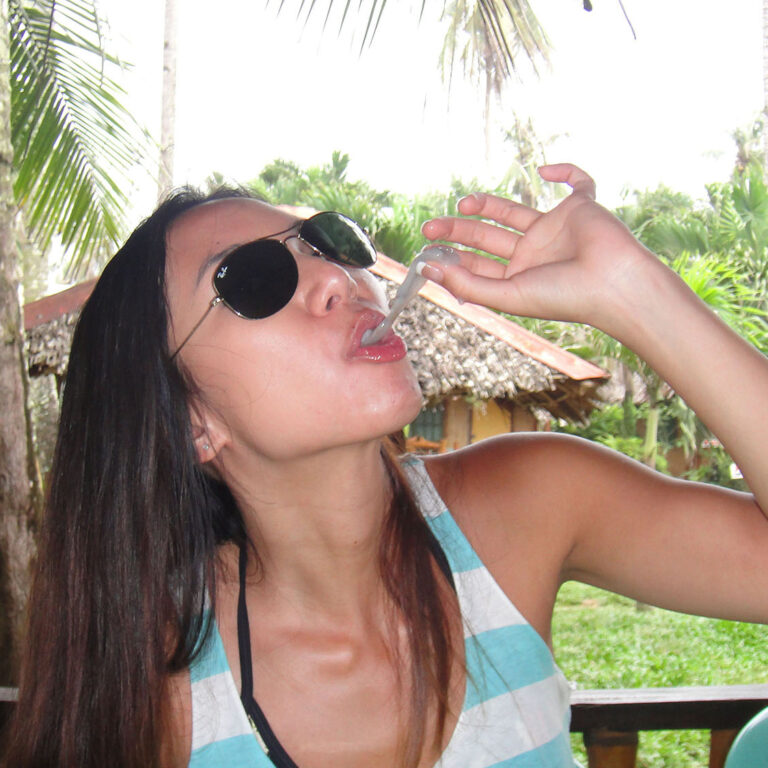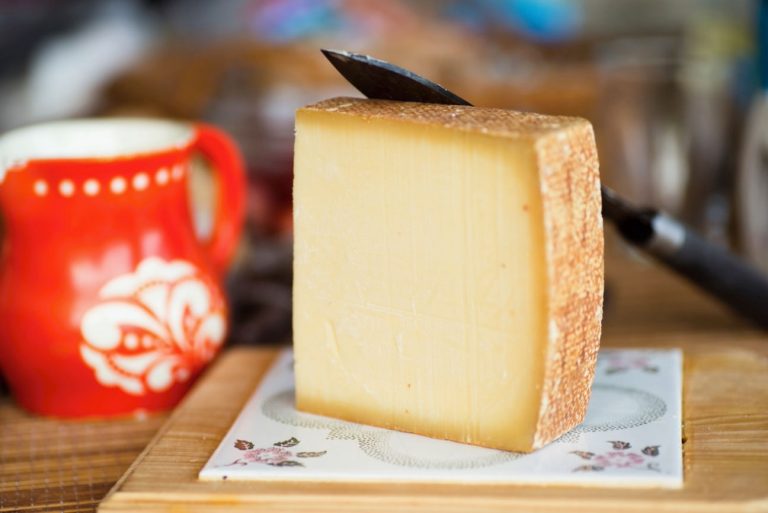
What is manchego?
Manchego is a semi-firm sheep’s milk cheese from the La Mancha region of Spain. It is typically aged from 2 weeks (for fresh manchego) and up to 2 years (for aged manchego) which produces a distinct flavorful cheese.
It is soaked in brine (salted water) for a few hours to a few days which gives it a bit of a salty aspect.
A quick way to visually identify this cheese is by discerning the color and pattern on the rind. Manchego has a distinct yellow color and unique herringbone pattern. This pattern, called pleita in Spanish, refers to the woven branches of the baskets used to shape the wheels of manchego cheese.
What does manchego taste like?
Manchego has a buttery rich and slightly sweet, nutty flavor with a slightly salty finish. As it matures, it develops a more robust zesty flavor.
Keep in mind that the rind of manchego is made of wax and is inedible.
What are substitutes for manchego?
The best substitutes have a similar nutty, sweet and/or saltiness such as:
- mozzarella – a soft water buffalo’s milk cheese with a smooth and creamy flavor; originated from southern Italy
- Monterey Jack – a semi-hard cow’s milk cheese with a mild buttery flavor and a hint of tanginess; originated from the United States
- muenster – a semi-soft cow’s milk cheese with a mild buttery flavor; originated from the United States
- asiago – a semi-soft cow’s milk cheese with a sweet, nutty flavor; originated in Italy
- English cheddar – a hard cow’s milk cheese with a mild creamy flavor (which becomes more intense with age); originated from the United Kingdom
- comte – a semi-hard cow’s milk cheese with a nutty, salty, smokey and slightly sweet & fruity flavor; originated from France
- chihuahua – a semi-soft cow’s milk cheese with a mild buttery flavor that becomes more sour with age; originated from the Chihuahua region of Mexico
- Parmigiano-Reggiano a.k.a. parmesan – a hard cow’s milk cheese with a nutty, salty and slightly fruity flavor; originated in Italy
- Pecorino Romano – a hard sheep’s milk cheese with a sharp, salty flavor; originated in Italy
- Zamorano – a hard sheep’s milk cheese with a sweet, nutty and salty flavor; originated from Spain
How do you eat manchego?
You can use manchego as a grated. sliced or melted cheese on any savory dish or display such as:
- charcuterie boards
- flatbreads
- pizzas
- pasta
- savory pastries
- sandwiches (grilled cheese, monte cristo, etc.)
- salads
best food & drink pairings
These are the best foods and drinks that best complement manchego’s nutty and slightly sweet & salty flavor:
food
- dark chocolate
- dried fruit & spreads: figs/fig spread, dates, grapes, membrillo (quince fruit jelly)
- nuts: Marcona almonds, roasted almonds, hazelnuts, walnuts
- olives: green olives, Spanish olives
- meats: prosciutto, chorizo, jamón ibérico (Iberian ham)
drinks
- Tempranillo – medium-bodied Spanish red wine
- nut brown ales – an English beer with malty notes of walnut & hazelnut
- porters – a dark and complex beer with fruity, caramel notes complemented by a malty bitterness
- stouts – a rich malty dark beer with a hint of burnt coffee notes











